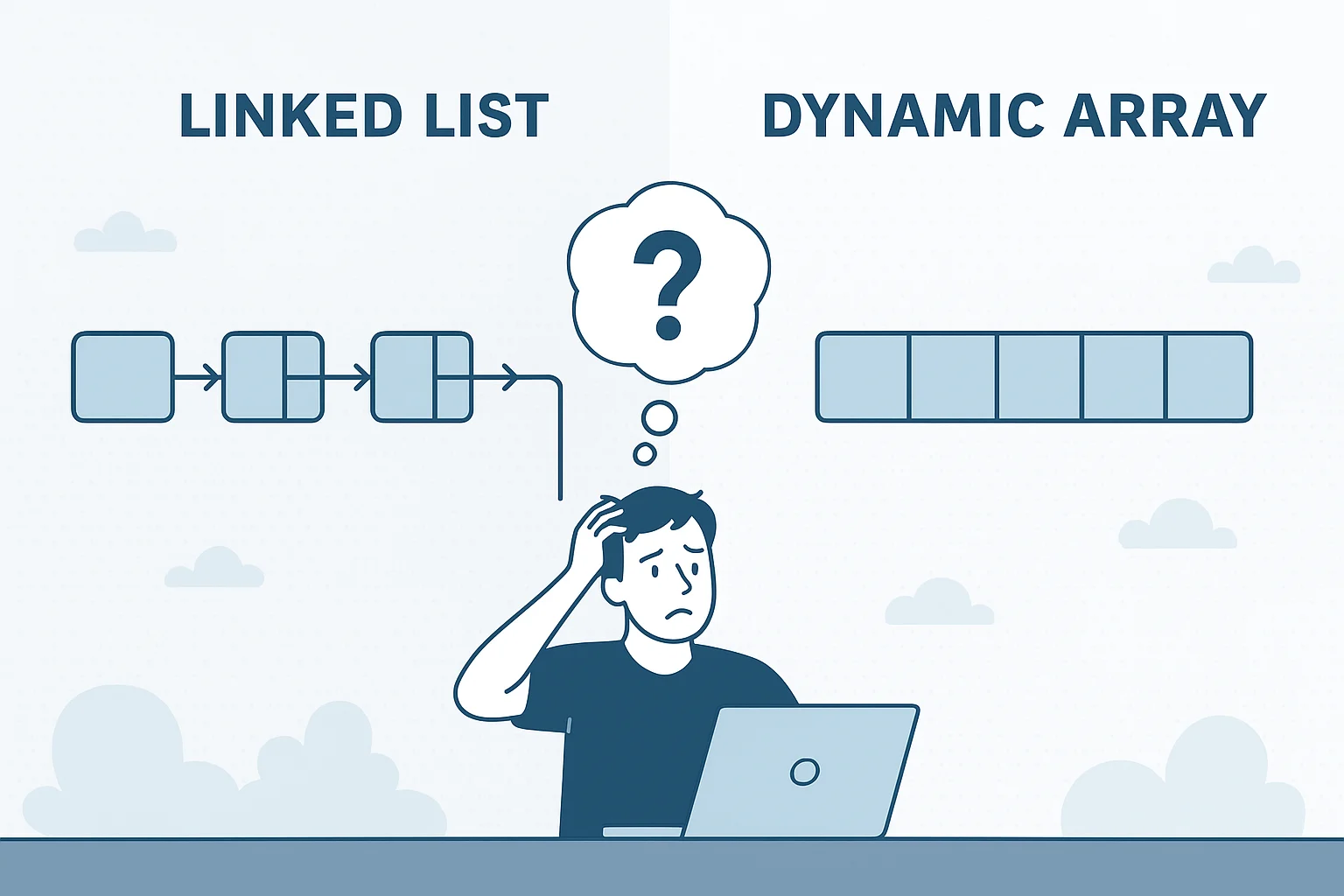If you have ever learnt any programming language and data structures in your life, then you must have heard about the linked list. You must have spent some time on understanding them, creating them, their traversals, reversals, insertion, deletion, and their different types. But, as you enter the real industry, coding and developing software, you might wonder: “Do we still use Linked lists today?” and “do linked lists still matter?”
Let’s dive into this classic question from both practical and theoretical perspectives.
Table of Contents
ToggleWhat is a Linked List Again?
A linked list is a linear data structure where elements (nodes) point to the next (and sometimes previous) node. Unlike arrays, the elements are not stored in contiguous memory locations.
There are three main types:
- Singly Linked List (one-directional)
- Doubly Linked List (forward and backward links)
- Circular Linked List (last node points to the first)
Why Are Linked Lists Taught So Much?
Linked lists are considered as a fundamental concept in Computer Science. They are taught widely and extensively as they teach us:
- Pointer manipulation
- Dynamic memory allocation
- Understanding how data structures work under the hood
They also provide the groundwork for more advanced structures like graphs, heaps, and symbol tables.
Do Linked Lists Still Matter?
The Modern Performance Reality
- Cache Locality Issues:
Modern computers heavily favor data structures that exploit spatial locality. Arrays store elements in contiguous memory locations, allowing processors to load entire cache lines efficiently. Linked lists, however, scatter nodes throughout memory, causing frequent cache misses that significantly impact performance.
A recent comprehensive study titled “RIP Linked List” found that array-based data structures offer distinct advantages, particularly in terms of memory efficiency and execution speed. The research demonstrated that even for operations where linked lists theoretically excel, arrays often perform better due to superior cache behavior.
- Memory Overhead Concerns
Linked lists require substantial memory overhead for pointer storage. In modern 64-bit systems, each node in a doubly-linked list consumes 24 bytes per element (8 bytes for data, 16 bytes for pointers), compared to arrays that only need the actual data size. This overhead becomes significant with large datasets
Where Are Linked Lists Still Used Today?
Linked lists serve as an essential teaching tool for understanding pointers, memory management, and basic data structure concepts. They provide a foundation for more complex structures like trees, graphs, and hash tables. Despite being overshadowed by dynamic arrays in many high-level applications, linked lists are not obsolete. They are still useful in:
1. Systems Programming
Languages like C or C++, which offer fine control over memory, often use linked lists in OS kernels, device drivers, and embedded systems.
2. Custom Data Structure Implementations
Linked lists are great for building:
Stacks
Queues
Graph adjacency lists
Hash table buckets (with chaining)
3. Functional Programming
Languages like Lisp, Haskell, and OCaml use lists (often linked lists under the hood) as a primary data structure due to their immutability and recursive nature.
4. Interview Questions & Learning
Linked lists remain a favorite interview topic for testing understanding of recursion, pointers, and algorithmic problem-solving. Linked list questions remain extremely common in technical interviews. Companies like Google, Facebook, Amazon, and Microsoft regularly test candidates on:
- Reversing linked lists
- Detecting cycles
- Merging sorted lists
- Finding middle elements
- Implementing LRU caches
A comprehensive analysis of coding interviews found that linked list problems appear in over 40% of technical assessments at major tech companies..
When Are Linked Lists NOT Ideal?
In modern high-level programming languages like Python, Java, or JavaScript, dynamic arrays (list, ArrayList, []) are preferred. Why?
Operation | Array (e.g. Python list) | Linked List |
Random access | O(1) | O(n) |
Insertion at end | O(1) amortized | O(n) (singly-linked) |
Insertion at start | O(n) | O(1) |
Memory overhead | Low | High (extra pointers) |
Cache performance | Better | Poor (non-contiguous) |
Real-World Use Cases (Examples)
Modern software systems use linked lists in several contexts:
- Music players: Song playlists with next/previous functionality
- Web browsers: Navigation history and tab management
- Text editors: Undo/redo functionality using doubly-linked lists
- Operating systems: Process scheduling and resource management
- Linux Kernel: Uses doubly linked lists (
list_headin C) in several subsystems. - Garbage Collection: Some GC algorithms use linked lists to track allocations.
- Undo/Redo Stacks: Can be implemented using linked structures for efficient traversal.
Conclusion: Are Linked Lists Dead?
Absolutely not. Linked lists are less common in high-level app development, but still vital in:
Low-level programming
Custom data structures
Academic learning
Systems or performance-critical applications
So while you might not use them in your next web app, they’re still relevant under the hood—and in your next tech interview!
TL;DR
Still used: In systems programming, memory-sensitive applications, and interviews.
Rarely used: In modern high-level apps where dynamic arrays perform better.
Still important: For foundational understanding and deeper CS knowledge.
Tech Isn’t Just for Coders Anymore — 7 High-Demand Non-Coding Tech Careers

